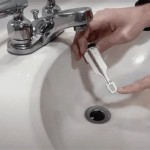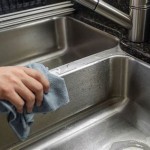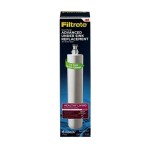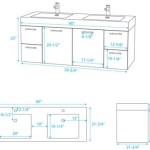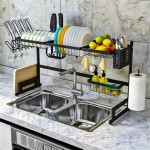My Kitchen Sink Is Clogged On Both Sides: A Comprehensive Guide to Diagnosis and Resolution
A clogged kitchen sink is a common household problem, but when the blockage affects both sides of a double sink, the situation often indicates a more widespread issue within the plumbing system. Understanding the potential causes and employing appropriate troubleshooting methods can help resolve the problem and prevent future occurrences. This article provides a comprehensive guide to diagnosing and fixing a kitchen sink clogged on both sides.
Identifying the Root Cause of a Double Sink Clog
Before attempting to unclog a double kitchen sink, it is crucial to identify the likely cause of the blockage. Several factors can contribute to this issue, ranging from minor obstructions to more significant plumbing problems. Accurate diagnosis is critical for selecting the appropriate remediation strategy.
One of the most common causes is the accumulation of food debris, grease, and other organic matter in the drainpipes. These substances can gradually build up over time, restricting water flow and eventually leading to a complete blockage. This is particularly prevalent in kitchens where food waste is frequently rinsed down the drain without proper disposal methods.
Another potential culprit is the improper disposal of non-food items down the drain. Small objects like coffee grounds, eggshells, and paper towels can easily get caught in the drainpipes and contribute to clogs. These materials do not break down easily in water and can accumulate, forming a solid mass that obstructs water flow. Additionally, items such as hair, soap scum, and mineral deposits can also contribute to the buildup.
Furthermore, issues within the garbage disposal unit, if present, can cause both sides of the sink to clog. A malfunctioning garbage disposal can fail to properly grind food waste, leading to larger chunks of debris accumulating in the drainpipes. If the disposal blades are dull or damaged, they may not be able to effectively process food waste, increasing the risk of clogs. Overloading the disposal with too much food at once can also contribute to the problem.
In some cases, the clog may not be located within the immediate drainpipes under the sink but further down the main drain line. This can occur if there is a significant accumulation of debris in the main drain, preventing water from flowing freely from either side of the sink. A clog in the main drain can also affect other plumbing fixtures in the house, such as toilets and showers, causing them to drain slowly or not at all.
Lastly, improper plumbing installation or design can contribute to frequent clogs. If the drainpipes are not properly sloped or if there are sharp bends in the pipes, it can increase the likelihood of debris accumulating and causing blockages. Additionally, undersized drainpipes may not be able to handle the volume of water and waste generated by a busy kitchen, leading to frequent clogs.
Step-by-Step Guide to Unclogging a Double Kitchen Sink
Once the potential cause of the clog has been identified, the next step is to attempt to unclog the sink. Several methods can be employed, depending on the severity and location of the blockage. Starting with the simplest methods and progressing to more advanced techniques can help effectively resolve the issue without causing further damage to the plumbing system.
The first and simplest method is to use boiling water. Pouring a kettle or pot of boiling water down each drain can help dissolve grease and other organic matter that may be contributing to the clog. This method is most effective for minor clogs caused by accumulated grease or food particles. It is important to exercise caution when pouring boiling water to avoid burns.
If boiling water is not effective, the next step is to use a plunger. A standard cup plunger can be used to create suction and dislodge the clog. Ensure that both sink basins contain a few inches of water to create a seal around the plunger. Place the plunger over one of the drains and repeatedly plunge up and down for several minutes. Then, remove the plunger and check if the water drains freely. Repeat the process on the other side of the sink, alternating between sides until the clog is dislodged.
For more stubborn clogs, a chemical drain cleaner may be used. However, it is important to exercise caution when using these products, as they can be corrosive and potentially damage the plumbing system. Follow the manufacturer's instructions carefully and wear protective gloves and eyewear. Pour the drain cleaner down each drain and allow it to sit for the recommended amount of time before flushing with hot water. Avoid mixing different types of drain cleaners, as this can create a dangerous chemical reaction. It is generally advisable to use chemical drain cleaners as a last resort, as they can be harmful to the environment and potentially damage the pipes.
A safer and more environmentally friendly alternative to chemical drain cleaners is to use a mixture of baking soda and vinegar. Pour one cup of baking soda down each drain, followed by one cup of vinegar. Allow the mixture to fizz for 30 minutes, then flush with hot water. The chemical reaction between the baking soda and vinegar can help break down grease and other organic matter, dislodging the clog. This method is often effective for minor to moderate clogs and is a safer alternative to harsh chemicals.
If the above methods are unsuccessful, the next step is to inspect the drainpipe under the sink, specifically the P-trap. The P-trap is a curved section of pipe designed to trap debris and prevent sewer gases from entering the house. It is a common location for clogs to occur. Place a bucket under the P-trap to catch any water, then carefully loosen the slip nuts that connect the P-trap to the drainpipes. Remove the P-trap and clean out any debris that may be causing the blockage. Rinse the P-trap with water and reassemble it, ensuring that the slip nuts are tightened securely.
If the clog is located further down the drainpipe, a drain snake or auger can be used to break up and remove the blockage. Insert the drain snake into the drainpipe and carefully push it through until it reaches the clog. Rotate the snake to break up the clog and then retract it, removing any debris that is attached. Repeat this process until the drainpipe is clear. A drain snake can be purchased at most hardware stores and is an effective tool for clearing stubborn clogs.
For more complex clogs or if the above methods are unsuccessful, it may be necessary to contact a professional plumber. Plumbers have specialized tools and expertise to diagnose and resolve plumbing problems, including stubborn clogs that are difficult to reach or remove. They can also identify any underlying plumbing issues that may be contributing to the problem and provide recommendations for repairs or improvements.
Preventative Measures to Avoid Future Double Sink Clogs
Preventing future clogs is crucial for maintaining a smoothly functioning kitchen sink. Implementing preventative measures can significantly reduce the likelihood of blockages and save time and money on costly repairs. Several simple habits and practices can help keep the drainpipes clear and prevent clogs from forming.
One of the most important preventative measures is to avoid pouring grease down the drain. Grease solidifies as it cools, coating the inside of the drainpipes and trapping food particles. Instead, collect grease in a container and dispose of it in the trash. Similarly, avoid pouring oil down the drain, as it can have the same effect.
Another important practice is to use a drain strainer or mesh screen in the sink to catch food debris and other particles. This will prevent these materials from entering the drainpipes and contributing to clogs. Empty the strainer or screen regularly to prevent it from overflowing and allowing debris to enter the drain.
When using a garbage disposal, be mindful of what you put down it. Avoid disposing of fibrous or starchy foods, such as celery, corn husks, potato peels, and pasta, as these can easily clog the disposal. Run cold water while operating the disposal to help flush the debris down the drain. Avoid overloading the disposal with too much food at once, as this can strain the motor and increase the risk of clogs. Clean the garbage disposal regularly by grinding ice cubes and lemon slices to remove any buildup.
Regularly flush the drainpipes with hot water to help dissolve any grease or food particles that may be accumulating. This can be done once a week to keep the drainpipes clear. You can also pour a mixture of baking soda and vinegar down the drain periodically to help break down any buildup and prevent clogs from forming.
Inspect the drainpipes under the sink regularly for any signs of leaks or corrosion. Leaks can lead to water damage and corrosion can weaken the pipes, increasing the risk of clogs. If you notice any problems, address them promptly to prevent further damage.
Consider using enzyme-based drain cleaners periodically. These cleaners contain enzymes that break down organic matter, such as grease and food particles, without harming the plumbing system. They are a safer and more environmentally friendly alternative to chemical drain cleaners.
Educate all members of the household about proper drain care practices. Make sure everyone understands the importance of avoiding pouring grease down the drain, using a drain strainer, and properly using the garbage disposal. By implementing these preventative measures, it is possible to significantly reduce the likelihood of double kitchen sink clogs and maintain a smoothly functioning plumbing system.

Why Is My Double Kitchen Sink Backing Up To The Other Side Flohawks Plumbing Septic

How To Unclog A Double Sink Clumsy Crafter

How To Unclog A Double Sink Clumsy Crafter

How To Fix A Kitchen Sink Clogged On Both Sides Expert Guide Clover Contracting

How To Fix A Clogged Kitchen Sink On Both Sides

Both Sides Of Kitchen Sink Filling With Water Explained

How To Unclog A Kitchen Sink Youtube

Slow Sink Drain Kitchen Not The Trap Youtube

How To Unclog A Double Sink Quick Fast Solutions

Why Is My Kitchen Sink Clogged On Both Sides Croppmetcalfe
